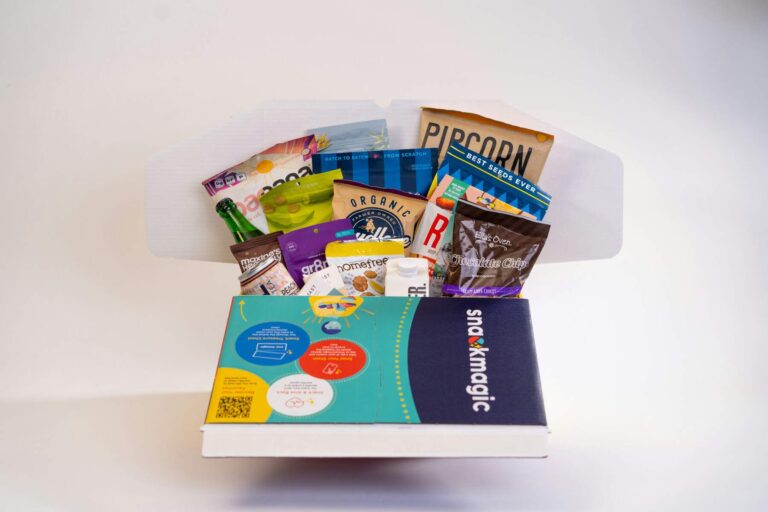For 2024, the overarching theme is for the consumer packaged goods industry (CPG), meaning that maintaining customer loyalty will be challenging.
Globally, consumers are feeling increasingly “pressured” according to a 2024 Nielsen report. This shift in consumer sentiment is starting to impact the consumer packaged goods (CPG) industry and their pricing decisions. Raising prices indiscriminately will no longer result in the easy quick wins of the past few years, as price sensitivity increases. More companies will be pushed into shifting to a revenue growth management framework and optimizing for price. Related to the consumer pressures are the ongoing challenges posed by supply chains and other rising costs. CPG manufacturers are facing tough decisions on absorbing costs versus passing them off to customers.
While pricing for CPG manufacturers is becoming more complicated and differentiated than ever before, the picture is not all doom and gloom. Even as the challenges posed by a tough economic environment increase, there are opportunities to be had from investing in pricing strategy and capabilities. On the side of technology, we are excited about the implications of Direct to Consumer sales on customer data and the insights it can enable. In the below article, our pricing experts reflect on the global trends, how they impact pricing, and what the recommended course of action is.
Contents
Pricing for Consumers under Pressure from Rising Inflation and Economic Uncertainty
Over the past year, rising inflation and economic uncertainty has led to increasing concerns in consumers about the cost of living and a coming recession. Inflationary pressures are also being faced by CPG companies as costs increase but their ability to raise prices without impacting volume is diminishing. This shared reality essentially forces two outcomes. On the one hand, consumers are altering behavior and shifting spending habits to lower cost items with a higher value-to-cost ratio, such as represented by private label goods. Globally, there is a shift of 0.6% to lower price tiers, while seemingly small, it equates to billions of sales (Nielsen). On the other hand, CPG manufacturers are seeing their margins being squeezed and driving revenue growth is becoming more complicated.
Consumer Behavioral Shifts are Not Uniform across Income
First, let’s examine the shifts in consumer behavior. The economic pressures and concerns are not being felt uniformly across all income classes, which is driving a growing polarization between the financially insulated and the financially insecure (Nielsen). The financially insecure are being disproportionately impacted by rising inflation and are measurably altering purchase behavior. While wealthier consumers are proving to be more resilient to inflation and keeping the same spending habits.
As a result of this polarization between income classes, CPG manufacturers can expect to see uneven impacts on sales volumes on various categories of goods from luxury items and low-cost essential goods. Luxury items may not see a drop in sales volumes. However, premium and mid-tier goods may see drops in sales volumes as consumers shift to low-cost items and prefer to buy based on value. This shift may also be offset by a reduction in overall spending by the most financially insecure consumers, as their dollars are spread even thinner.
Increasing Price Sensitivity Is Forcing Price Strategy Adjustments
With the pressure coming both from rising costs and from consumers’ increased price sensitivity, CPG manufacturers are forced into adapting their pricing strategy to account for changing consumer spending habits and value perception, yet also sustain sales volume.
One possible response to this challenge is through value deflation, which reduces the value to the customer either through offering slightly lower quality or smaller size of the package or portion – also known as shrinkflation. The main issue with shrinkflation is that consumers perceive it as deceptive, and it runs counter to an increasing consumer preference for transparency from companies. You can counteract that perception by clearly communicating either that you are increasing the price, shrinking the package or simply innovating the product to make it more affordable. Some companies choose to leave the original size on the shelf but at a higher price and introduce the smaller but lower cost item, letting the customer choose.
Another similar tactic, mini versions may prevent consumers at the lower price tiers from switching to more affordable options as they get priced out from value players. “Mini” versions of products are less inflammatory than shrinkflation but achieve the same purpose. They are clearly much smaller than the regularly sized product and are priced to match what customers are willing to pay.
Opportunity: A Comprehensive, 360 Approach to Pricing Optimization
Adapting to these economic shifts requires a holistic approach to pricing strategy that encompasses both financial objectives, competition pricing, and consumer perceptions. One key input is the consumer willingness to pay. Typically, when we analyze customer willingness to pay, we start with segmenting customers on behavior, assess perceived value of the product, and quantify price elasticity. This data-driven analysis is the basis for strategically adjusting price points, balancing profitability and competitiveness – without sacrificing customer loyalty.
Another area to consider is adjusting your product mix. As discussed above, companies have approached this through shrinkflation or introducing “mini” versions of existing products, but those are not the only available options for consideration. Returning to the basics of product mix may be productive in identifying the products that can be pruned or replaced by higher performing alternatives. The products that drive revenue and traffic remain a priority, but other products can be streamlined to account for demand, cost and redundancies, and is worth the effort to maximize revenue potential.
Ultimately, the importance lies in strategic pricing models that reflect changing consumer habits and value. By leveraging data-driven insights, manufacturers can optimize pricing strategies to align with consumer expectations and purchasing power, driving long-term growth and profitability.
A 360 approach to pricing takes into account financial objectives, the competition and consumers to drive long-term profitability.
Shifting to Private Label Brands
Under inflationary pressures and concerns around the economy, price sensitive consumers often seek more affordable alternatives in homogenous or oversaturated product categories without compromising on quality. Private Label (PL) brands deliver on that promise and are experiencing a surge in demand as a result. On the one hand that’s excellent for retailers but national brands are having to compete smarter and more strategically against the innate advantages of PL brands.
Large retailers are capitalizing on their home team advantage, using store control, monopolistic PL competition, vertical control, and brand equity to increase revenue. Tactics include intentionally positioning PL brands on shelves next to more expensive branded alternatives to enhance the perceived value of the PL offering. Other tactics include loyalty driven pricing and promotional controls that encourage repeat purchases and enhance customer retention. With the increasing bargaining power of PL brands and the substitution effect widening the price gap between PL and branded products, retailers are embracing these trends to boost profitability and customer loyalty.
Opportunity: Take Advantage of Price Anchoring
Large retailers are clearly at the advantage in today’s pressured climate and relative to the branded items they carry, but there are ways to still gain market share or at least reduce the substitution effect. All that is required is a strong analysis and understanding of your products, coupled with a strong execution of pricing, distribution, placement on shelf, etc.
For example, we were developing the price strategy for a client in the frozen desserts category, and we observed a significant price gap between the private label (PL) and mainstream brands. Recognizing this gap, we identified an opportunity to introduce a value brand. This new value brand was strategically priced to attract consumers seeking a branded product at a more affordable price point without undercutting the PL.
By implementing this strategy, we achieved incremental growth for the category and provided consumers with more choices. Importantly, the volume for this new value brand was sourced from the PL segment rather than from the mainstream brand, ensuring we did not cannibalize the existing mainstream brand sales.
Offering value packs or premium product offerings can reduce the substitution effect, where consumers switch to PL brands from national brands as an equivalent product.
Adapting to Shifting Consumer Preferences
Consumer preferences are evolving, with an increasing demand for brands that demonstrate transparency and ethical practices that can include eco friendly sourcing, sustainability, and health conscious items. Parallel to the increasing accountability demanded of CPG manufacturers, we are also experiencing a fragmentation of traditional market segments, with consumers drawn to specialized products that cater to specific lifestyle needs, such as gluten-free and vegan. This has influenced global supply chains and production practices, driving changes in product formulations. The challenge is in adapting their offerings to meet these demands while maintaining competitive pricing, quality, and brand strategy.
Several pricing strategies are already in play to adapt pricing to customer preferences. Many CPG manufacturers have capitalized on these changes through premium pricing strategies for products that are either specialized or sustainably produced, i.e. organic. Other companies have implemented flexible pricing models that reflect real-time changes in supply and demand, which are particularly effective for perishable goods. We have also seen an increase in promotional strategies that are targeted to customer segments, such as discounts and bundled offers to maintain volume sales among price increases, and ultimately optimize revenue growth.
Opportunity: Regular Monitoring and Agile Pricing
In today’s competitive landscape, CPG manufacturers must innovate to maintain market share and drive growth. In our pricing survey, we found that price increases and revenue targets were met or exceeded in companies that had monthly reviews of pricing strategy. Monthly reviews of changing sales trends, coupled with competitive shifts, enable CPG manufacturers to stay aligned with consumer preferences and market dynamics. By embracing innovation in pricing and product offerings, retailers can foster brand loyalty, ultimately securing their position in the evolving CPG market.

2024 Consumer Goods Pricing Benchmarks
White Paper – 2024 Executive Pricing Survey 2024 Consumer Goods Pricing Benchmarks We analyzed the responses from our 2024 Executive Pricing Survey and uncovered actionable insights for companies in Consumer Goods across North America and Europe. Executives from the consumer goods provided insider information on their price increases, gross margin,
Navigating Supply Chain Challenges
The word in supply chain is volatility. Supply chain disruptions, rising raw material costs, and logistical complexities is business as usual for CPG manufacturers yet poses significant challenges for optimizing revenue and profitability. To address those challenges, CPG manufacturers are seeking operational efficiencies, alternative suppliers or distribution methods but also aligning pricing strategies to cover increased costs while still driving value to the consumer.
CPG manufacturers face tough decisions on absorbing the costs versus passing them off to consumers. For every industry, we have seen that there appears to be a tipping point in the percentage of cost increases passed onto consumers. Passing on too much can result in higher retail prices, impacting sales and customer loyalty. Pass on too little and that impacts profitability.
Dynamic pricing is often used to adjust prices in response to changes in costs, but a better strategy is to focus on pricing based on value or demand.
We have seen some CPG clients using a dynamic pricing strategy to adjust prices in response to changes in costs, but this is usually tied to commodity prices and for private label goods. Instead, a better strategy is to focus on pricing based on value or demand.
The Opportunity: Dynamic Pricing and Increased Transparency
Efficient supply chain management not only impacts cost and efficiency but also directly influences pricing strategies and consumer demand. We recommend an approach to pricing that focuses on flexibility, values, differentiation, and transparency. While in and of themselves, they can seem generic, in practice, they have specific actions associated with each of them.
Price flexibility increases the efficiency and speed at which a company can adjust pricing as costs change and can be implemented using the tactic of promotions. Second, shifting to a value-based pricing with differentiated product tiers divorces pricing from cost and provides room for price increases for premium product lines. Being transparent about why and when prices are being adjusted is increasingly preferred by consumers. It builds the brand, but it also supports the previous point, shifting to value-based pricing, when your justification is strong. Pricing has a definitive function in helping manufacturers navigate supply chain challenges effectively while maintaining profitability and market share.
Direct-to-Consumer (DTC) and E-Commerce Revolution Continues to Grow
The transition to DTC and e-commerce models represents a paradigm shift for manufacturers and one that is not likely to regress. Consumers prefer the convenience of shopping online, the better pricing, and the free and fast delivery.
Over the past few years, the DTC business model has taken e-commerce a step further and seen a meteoric rise in popularity, doing away with intermediaries such as online marketplaces and instead, engaging directly with end consumers. In 2023, DTC sites were the “third most popular online purchase channels after marketing places and supermarkets”, according to Statista. That same year, DTC e-commerce sales in the U.S. generated around $135 billion, and by 2025 are estimated to reach $227 billion. What emerged as a competitive advantage will quickly become table stakes for CPG manufacturers. The benefits are clear: reducing costs and bypassing the restraints of traditional retail.
The Opportunity: Personalized Consumer Experiences and Recurring Revenue
For manufacturers in CPG, the transition to e-commerce broadly and to DTC specifically opens up a whole new world of consumer insights, which when used effectively has an undeniable impact on pricing strategy and profit margins. The possibilities of increased access to consumer data are frankly exciting. In principle, the larger and more immediate the data set, the more targeted pricing optimization will become giving rise to more sophisticated approaches to revenue management, and more growth.
One note of caution, more consumer data is not the penultimate means to pricing optimization, but the team needs to have robust analytic capabilities to interpret that data effectively. Nevertheless, by embracing DTC and e-commerce, manufacturers can leverage evolving consumer preferences for convenience, transparency, and personalized shopping experiences to optimize pricing.
For example, a DTC CPG client of ours in groceries analyzed purchase behavior and price sensitivity to discover that certain items were often bought together. After segmenting customers based on purchase behavior and price sensitivity, they offered varying promotions on bundled items based on how sensitive the customer segments were to price. Once we introduced the bundle, the client saw an increase in the individual product sales by 48%. The success of this exercise in pricing optimization was factor of the direct access they had to customer data but also their pricing autonomy.
This example is just the tip of the iceberg. Direct access to consumers fosters improved product innovation, highly personalized marketing strategies, and stronger brand loyalty – all components driving higher value transactions and enhanced profitability.

Industry - Consumer Packaged Goods
Identify and Act on Opportunities in the Moment
Our experts in pricing help businesses in the consumer goods industry build effective pricing strategies.
Embracing Omnichannel Strategy for Pricing
The increasing globalization of e-commerce platforms and the demand for personalized shopping experiences underscore the importance of omnichannel strategies in the CPG industry. By seamlessly integrating online and offline channels on all aspects of pricing and loyalty programs, businesses can enhance customer experience, improve pricing transparency, drive higher retention rates, and improve demand forecasting and price optimization.
Consistent pricing is key to the success of an omnichannel strategy. Aligning pricing strategies across all channels is foundational for retaining customer trust and preventing market confusion. Especially for companies in multiple markets, consistency and aligning pricing strategies ensures that prices match markets and across channels. Consumers expect an omnichannel experience and will naturally gravitate to the channels offering the best perceived value, which is why it is increasingly important to align pricing strategies across all channels or vary your offer accordingly.
The Opportunity: Optimizing for Price Elasticity with Channel-specific Offers
Understanding price elasticity across channels and optimizing pricing accordingly is crucial for businesses aiming to maximize profitability. Developing channel-specific offers can encourage customers to utilize multiple channels, thereby increasing their lifetime value. The implementation of loyalty programs that integrate across all channels and offer rewards based on customer engagement and spending patterns can further enhance customer retention. Additionally, employing different pricing models, such as subscription-based pricing for regular purchases or premium services across channels, can provide significant opportunities for growth in direct-to-consumer (DTC) markets.
An example of these strategies in action comes from a client of ours in the food sector, which used these principles to identify customer willingness to pay for different purchasing options. They discovered insights such as the propensity for customers to buy online and pick up in-store versus having items shipped directly. For instance, if customers live less than 15 miles from the nearest store, they are more likely to opt for buy and pickup. The number of customers who prefer to ship increases the farther they live from the store. Specifically, 90% of customers who live 30 miles or more from a store prefer to ship. That number might change to 80%, depending on the price gap between shipping and pickup.
These insights helped our client adjust their pricing strategies based on how distance and price gaps influence customer behavior. Instead of having uniform prices across all stores, they assigned stores to one of five tiers with differential pricing for each. This allowed them to adjust pricing based on the spread of customers they served, with the balance either living closer to the store or farther away.
Final Thoughts on Pricing Insights for 2024
As we look towards the remainder of 2024, the overarching theme for the consumer packaged goods (CPG) industry is a notable shift in power to consumers, driven by evolving behaviors and an increased focus on value. Consumers are feeling more pressured economically, leading to heightened price sensitivity and a demand for better value, challenging CPG manufacturers to adapt their pricing strategies.
Rising costs and supply chain disruptions further complicate this landscape, necessitating a move towards a revenue growth management framework. Despite these challenges, there are ample opportunities for growth through strategic pricing, leveraging technology, and understanding consumer insights.
Investing in a comprehensive pricing strategy that balances consumer perceptions and financial objectives is essential for navigating the complexities of the current market. Manufacturers can benefit from adopting holistic approaches, such as dynamic pricing, value-based pricing, and transparency in price adjustments.
Additionally, the rise of private label brands, shifting consumer preferences, and the growth of direct-to-consumer (DTC) models present both challenges and opportunities. By embracing these trends and optimizing pricing strategies accordingly, CPG manufacturers can enhance profitability, foster customer loyalty, and secure their position in the competitive market landscape. The examples provided throughout this article illustrate how data-driven insights and innovative pricing models can drive sustainable growth and profitability in the evolving CPG industry.




